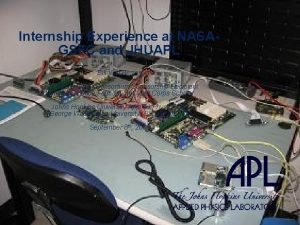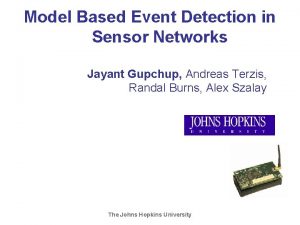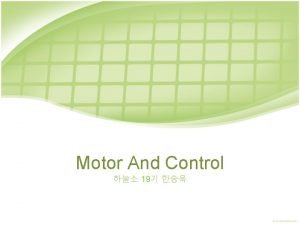Johns Hopkins Motor Pneu Step The Surgical hand








- Slides: 8

Johns Hopkins Motor “Pneu Step” The Surgical hand of the future

Pneu Step § Developed by the Engineers at the Johns Hopkins Urology Robotics Lab located between Maryland Washington D. C § It is no wonder that this invention was derived from this particular lab. Over 100 medical devices have been produced here.

Pneu Step § This invention dubbed “Pneu Step” is a new motor that is going to be the new hand in biopsies, therapies, and MRIs. § It is made entirely out of plastics, ceramics and rubber, and driven by light and air.

Pros of Pneu Step § Biopsies have been performed blind up to this § § point with our present day imaging tools. Now this motor and robot can target tumors. Since the motor is made without metal or electricity, this should increase accuracy in locating and collecting tissue samples, reduce diagnostic errors and also improve therapy. The motor that drives the devices can be so precisely controlled by computer that movements are steadier and more precise than a human hand.

Pneu Step § No other motor satisfies the combined MRI compatibility, medical safety, and reliability required for precision MRI instrumentation § Encoding was performed with fiber optics so that the motors are electricity free, exclusively using pressure and light

How Precise? § This robot moves slowly but very precisely. § In fact, experiments show that the needle always comes within a millimeter of the target now with this new motor.

How It Works § The gears are turned by air flow, which is in turn controlled by a computer located in a room adjacent to the MRI machine. § The robot goes alongside the patient in the MRI scanner and is controlled remotely by observing the images on the MR. § The motor is rigged with fiber optics, which feed information back to the computer in real time, allowing for both guidance and readjustment.

Problems § The strong magnetic interference was a huge issue before. This caused the distortion of MR images and big diagnostic errors. § Also was the issue of accuracy which has vastly improved since doctors are not guessing when going in blind are now equipped with better images.















